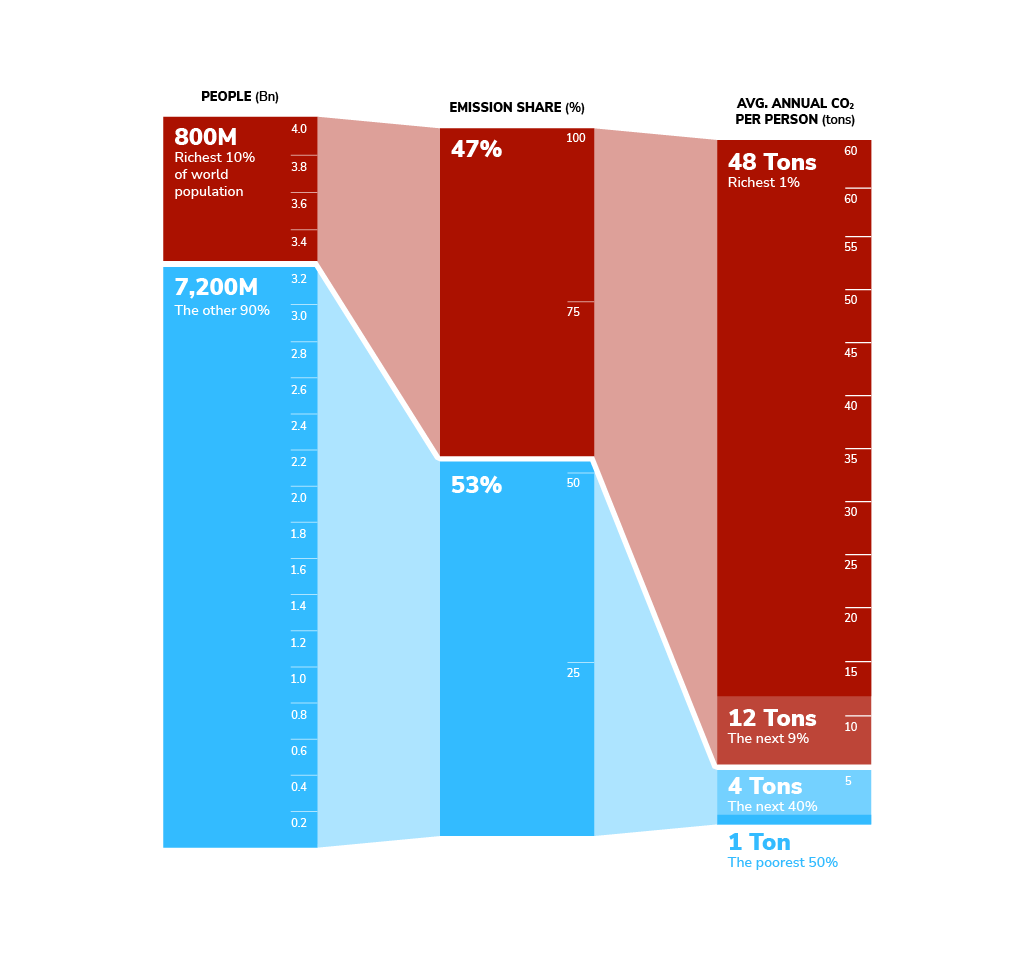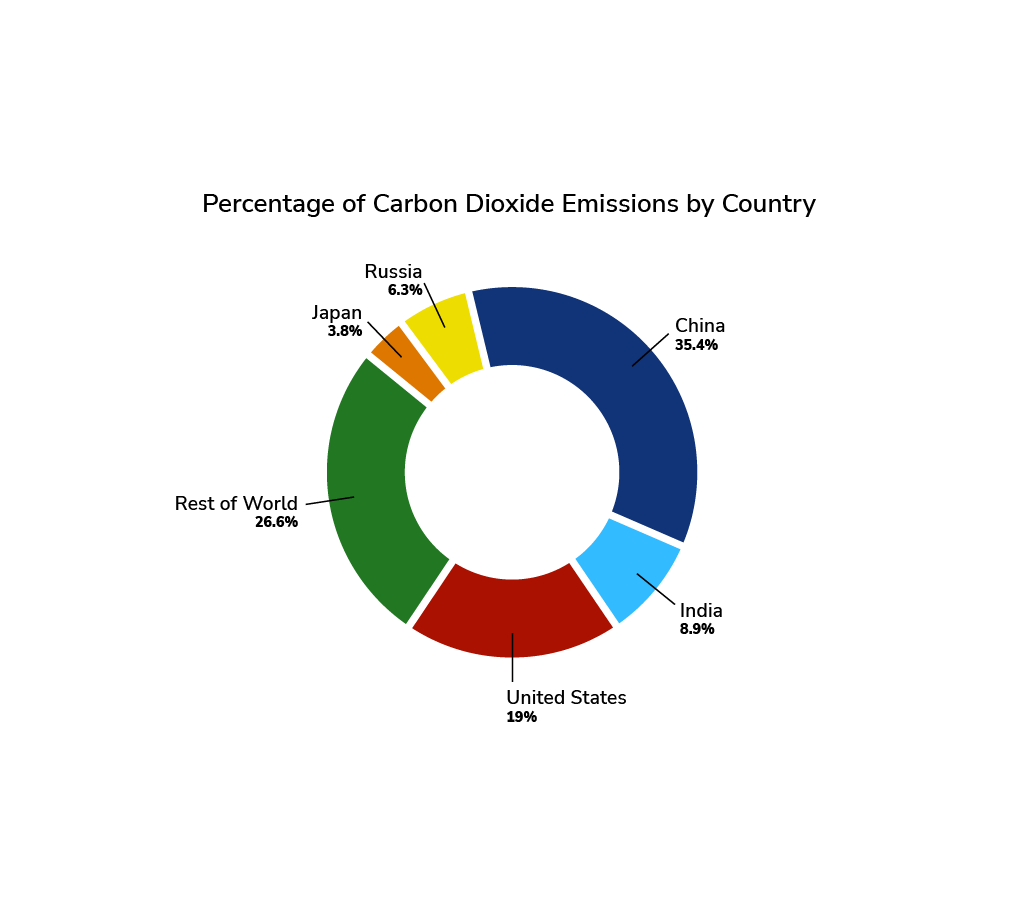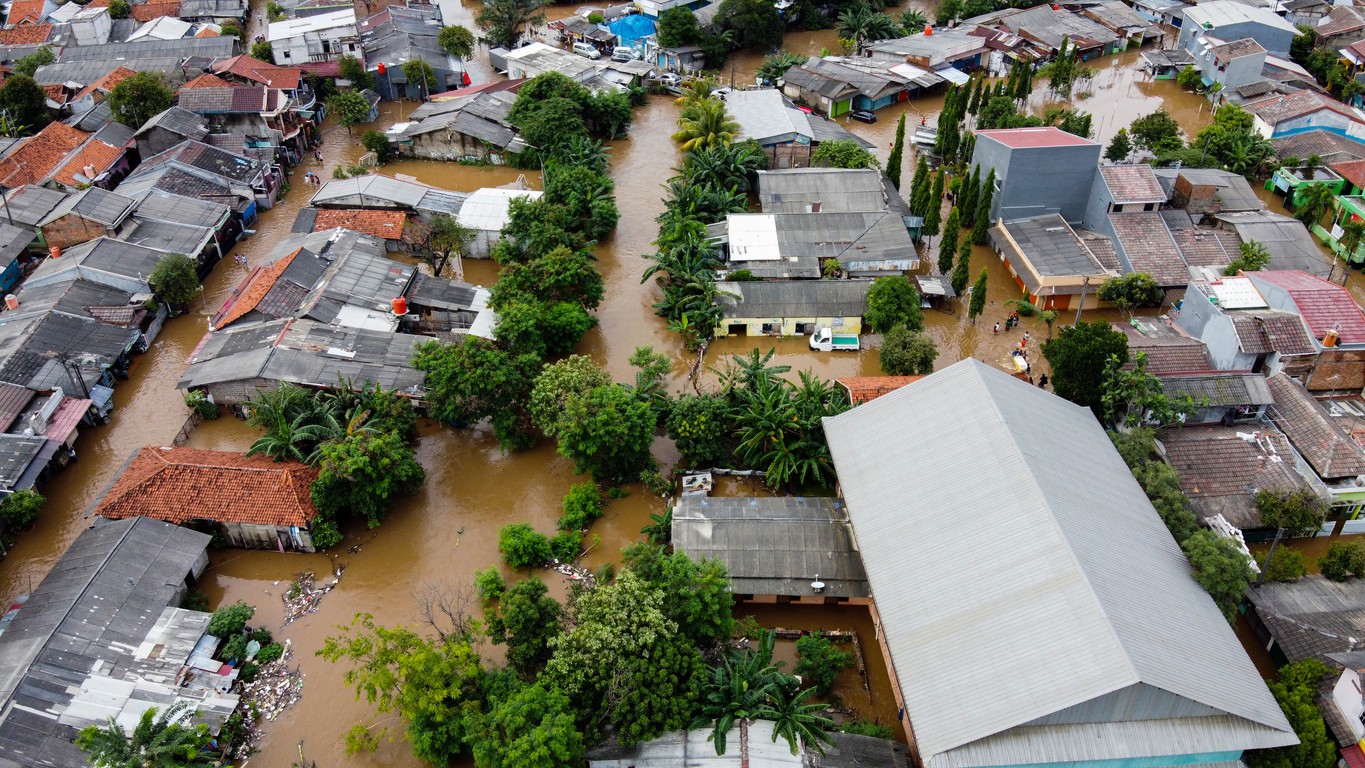by Nicola Phillips, Copywriter
For 200 years, roughly since the Industrial Revolution, climate change has followed an inexorable path of cause-and-effect. Countries in the Global North — the U.S., Canada, Russia, Europe, Japan, Singapore, South Korea, Australia, and more ambiguously China — have perpetrated the worst of climate change, and countries in the Global South — Latin America, Africa, and most of Asia — have suffered the brunt of the consequences.
The irony in the imbalance between the perpetrators and victims of climate change has been expounded upon repeatedly. Logically, the reason for this imbalance seems obvious, as the human inventions that cause the most harm to the planet are more developed in the more “developed” countries, while less-resourced countries are less equipped to combat the impacts of these harms.
This happens on a micro level as well. The wealthiest 10% contribute nearly half of all carbon emissions. Poor people die because of it.

The global inequity of climate change has led advocates to push increasingly for climate “loss and damage.” Under a loss and damage mandate, Global North countries would pay reparations for the damage wrought on the Global South.
Such efforts make us consider our interconnectedness. Simultaneously, the dire state of our collective energy security — exacerbated by the ongoing war in Ukraine — has prompted renewed calls by many countries (not least of all the U.S.) for energy independence.
I was curious — what does energy independence mean in an interconnected world? Can any one country claim independence from the global web?
Trying to define energy independence
One commonly understood definition of energy independence focuses narrowly on energy imports versus exports. If a country exports more energy than it imports, it could be considered “energy independent” under this framework, because the world relies on that country’s production of energy more than the country relies on the world for its consumption of energy. An equivalent definition measures whether a country produces more energy than it consumes.
A stricter definition might ask whether a country produces all of the energy it consumes, thus avoiding any energy imports.
Even this third definition fails to capture true independence. Even if a country produces all of the energy it consumes, it would have to withdraw from any international trade in order to claim energy independence, because any international trade would necessarily involve importing or exporting energy-intensive products.
And, of course, even isolationist countries externalize the impacts of their behavior to the rest of the world, most often in the form of carbon emissions. Is any country self-contained?
The illusion of self-containment
If we’re not taking into account the full range of negative and positive externalities associated with energy production and consumption, we are missing the larger picture.
Climate damage has long been a one-way street. For 200 years, the so-called developed world has dumped carbon emissions into the atmosphere. The effects have been felt everywhere, but most prominently by those places where resources are scant and adequate infrastructure is lacking.

There will be an inevitable backfire effect.
War, famine, mass migration, economic turmoil, pandemics … these are not self-contained issues. The most catastrophic effects of climate change might begin in the Global South, but they won’t end there.
We’re already seeing this happen. Climate refugees will continue to head north. New outcrops of viral infections — from COVID-19 to monkeypox — continue to sweep the globe. The volume of people seeking asylum and the diversity of viral spillover will accelerate over the coming decades.
The ripple effects are everywhere. The global economy will increasingly feel the burden of climate change. An IMF report from September estimates that international reserves could be drained of $1.8 trillion due to overlapping climate vulnerabilities.
Who really pays?
No one escapes the spillover.
The implication of the loss and damage mandate is that well-resourced countries must make amends for past wrongs for the sake of less-resourced countries. But framing the conversation in this way obfuscates the truth. It is not just for the sake of less-resourced countries that well-resourced countries should step up their act.
Climate change will destroy us as a species. The have-nots will go first, but the haves will follow. We will be wiped out collectively. In pitting haves against have-nots, the loss and damage framework fails to account for the collective.
I am not against assigning blame. It should be clear to anyone who has been paying attention who is to blame. But to consider what needs to happen next only as a righting of past wrongs would be short-sighted.
Energy independence is a pipe dream, and we are all feeling the repercussions of the last 200 years, some more acutely than others. The Global North will benefit by working proactively to decarbonize globally, to rebuild infrastructure, and to insulate vulnerable communities. We share a common fate. It is disingenuous to suggest otherwise.



